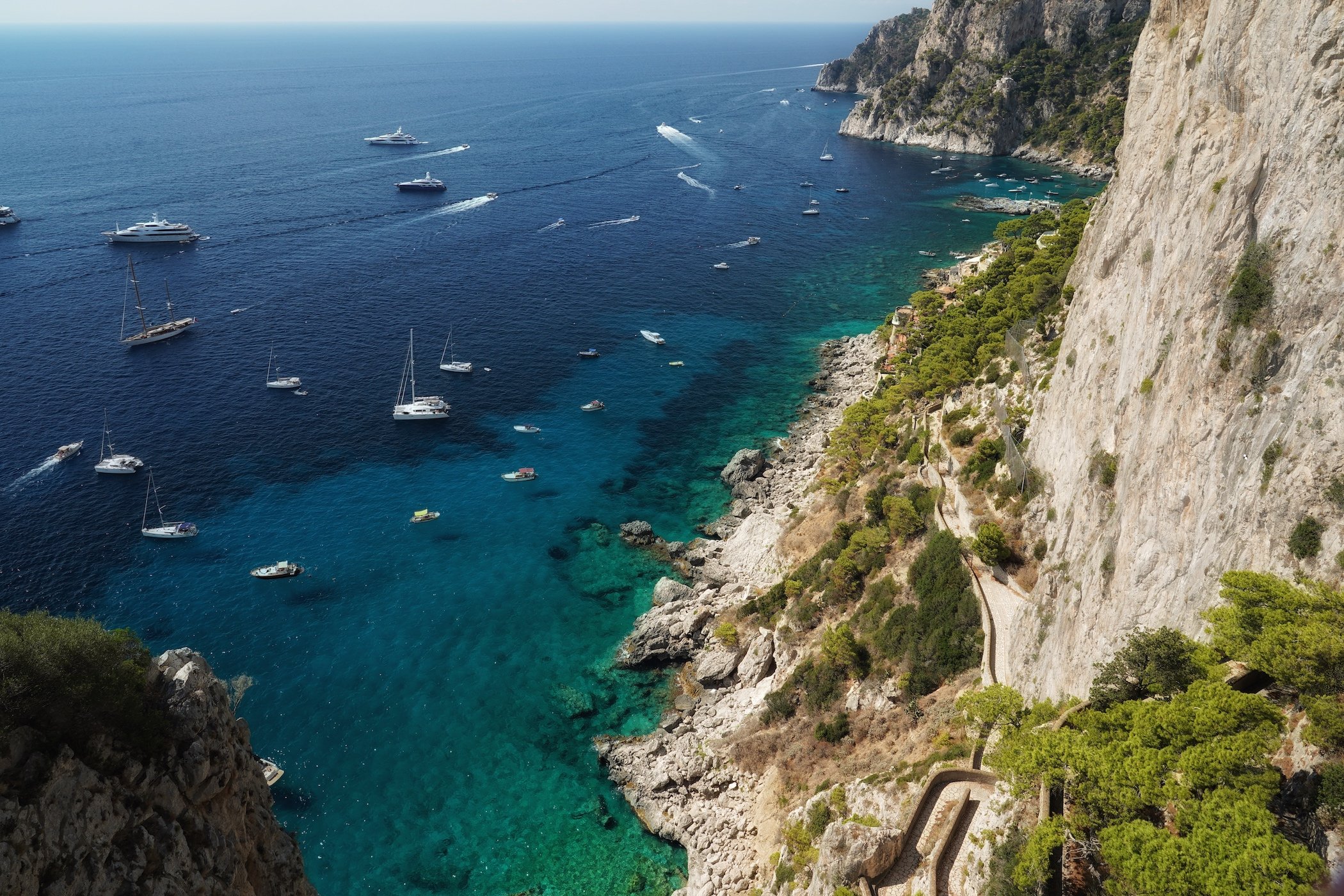The Amalfi Coast: Let’s Go!
Italy is one of the world’s most visited countries for good reason. I have a special passion for Iberia, but I have to admit that there is no place on earth with as much beauty, culture, history, food, and wine crammed in to every square meter as Italy. It’s overwhelming. For first time visitors, I always recommend a highlights-based approach, because your first trip to Italy is really just a reconnaissance for your next trip to Italy. For the first trip, I highly encourage you to do it with experts that know how to make the most of your time, and provide a meaningful experience in a country that can be complex despite the ubiquity of its attractions. My partners at Insight Vacations have a variety of awesome itineraries for first time visitors. Among my favorites is their Best of Italy itinerary.
But that second trip. Oh yes. Now you get to focus a bit. The Dolomites? Tuscany? Sicily? Perhaps, however, the most iconic destination is the Amalfi Coast, stretching along the southern edge of the Sorrentine Peninsula between the towns of Positano and Vietri sul Mare. I love author Melissa Hill’s quote:“They say that when Judgement day comes, the people of Amalfi will have no change in life, for they are already living in paradise...” Let’s learn more about this storied coastline and how to wisely approach it.
What’s it like?
The Amalfi coast is similar to the California Coast in the Big Sur area, with lush steep terrain tumbling into the sea. Like Big Sur, there is only one road winding its narrow way precariously above the blue water below. But that’s where the similarities end. The Amalfi coast is composed of a number of villages, the most famous of which is Positano. The villages rise steeply up like the terrain around them, with stair cases that lead from one level to the next. And yes, one of the villages is named Amalfi (in case you were wondering). Some villages (like Positano) stretch downward to the water and cove-type beaches. Others are perched high above the water with no direct access to the sea. All of it together creates a remarkable mosaic of quaint villages, blue water, and stunning coastline.
When should I visit?
Positano Beach
For better or worse, the Amalfi Coast switch has two seasonal positions: On or Off. From the end of October through Easter, the weather is unpredictable and many hotels, restaurants, and shops literally close down. That being said, May and October (the shoulder months) can be spectacular, providing visitors the opportunity to explore without the crush of the summer. The summer (July and August most specifically) is, as you might expect, the high season. I have to admit that I am not a fan of the area during this period. The crowds can be maddening, with very high temperatures. The off-season, with its unpredictable weather offers opportunities to explore without the crowds. Doing so, however, requires you to have a plan, since much of the tourist infrastructure is shut down. I would also mention that choppy seas in the off-season may limit your ability to get out on the water, even to destinations as close as Capri. So yes, the windows of opportunity for a pleasant visit can be narrow.
How do I get there?
First of all, I highly recommend that you do not attempt to approach the area in a rental car during the high season. I have seen many parking-poor destinations in my life, and I think the Amalfi Coast wins the grand prize. If you want to stay on the Coast itself (and you have made your lodging reservations well in advance) you can take the train from Rome to Naples, then get a car service to drive you south through Sorrento to the Amalfi Coast. The drive is about an hour and twenty minutes depending on traffic. Once you are at your destination village, you can easily get around the coast by public bus or ferry. (There is also a train from Naples to Sorrento, The Circumvesuviana. Its cheap. It’s usually crowded. And unless things have changed recently, it’s not air conditioned.)
So what’s the best strategy?
Rather then staying in one of the Amalfi coastal villages, consider making Sorrento your base. By doing so, you really turbo-charge your options. Sorrento sits on the northern side of the Sorrentine Peninsula, overlooking the Bay of Naples. While larger and not as spectacular as villages like Positano, it is an excellent hub for your exploration (and it doesn’t hurt that it’s famous for its Limoncello)! Here’s why I love Sorrento:
It gives you easy access to the Amalfi Coast without being stuck there. You can easily get to the Coast by ferry, bus, guided tour, or private car.
It gives you easy access to the stunning island of Capri, allowing you to come and go from the nearby island on the hourly ferries leaving from the port of Sorrento. Learn more about Capri here.
It gives you easy access to Pompeii and Herculaneum, two of the most impressive historical/acheological sites in the world. And of course, you have nearby Mt. Vesuvius.
While staying on the Amalfi Coast itself can be a beautiful experience, I would argue that Sorrento is a better base for most visitors exploring this part of Itay.
Specific Recommendations:
If you choose to stay on the Coast, consider my favorite Virtuoso property, The Santa Caterina
For Sorrento, consider the amazing Excelsior Vittoria
If you have questions about this beautiful part of Italy, give me a call. I’m happy to help in any way that I can, from planning a turnkey experience to simply providing a restaurant recommendation. Regardless of how you proceed, the Sorrentine Peninsula with its beautiful Amalfi Coast should be on your bucket list!






